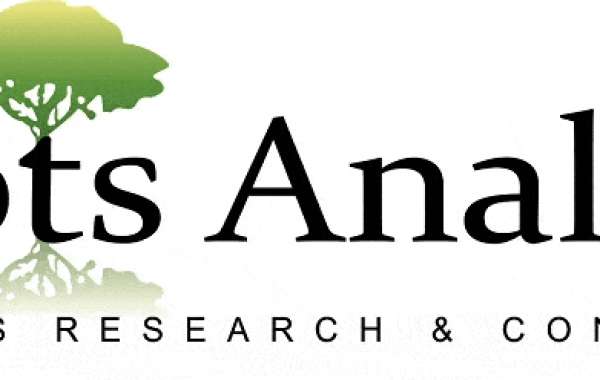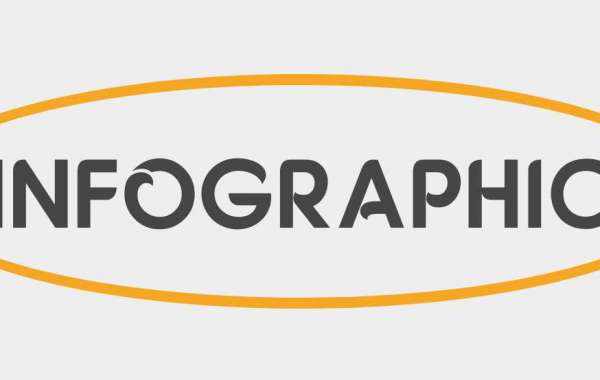- Eminent representatives from different biopharmaceutical companies confirm the growing interest in stem cell therapy research, highlighting the prevalent and anticipated trends in ongoing RD activities.
- More than 120 industry players are engaged in evaluating the potential of over 280 stem cell therapy products for the treatment of a variety of disease indications.
- The pipeline features a variety of marketed / clinical therapies being evaluated across different stages targeting various types of stem cells; these products are designed for administration via diverse routes of administration.
- Stem cell therapies have demonstrated the applicability across over 25 unique therapeutic areas; cardiovascular, neurological, musculoskeletal and autoimmune / inflammatory disorders are presently the primary focus.
- Several organizations have extended financial support to aid research efforts in this domain; the current focus is on the evaluation of different stem cell types across multiple clinical conditions.
- In the last few years, over 540 clinical trials, evaluating various types of stem cell therapies in more than 52,000 patients, have been initiated; most of these trials are presently being conducted in centers across the US.
- As several therapy candidates progress towards regulatory approval, developers are exploring diverse commercialization strategies to be implemented across different stages of a product’s launch cycle.
- Owing to the rising demand for stem cell therapies, and challenges associated with manufacturing and scale up, industry players have demonstrated preferences to engage the services of contract service providers.
- More than 80 industry / non-industry players, based in different regions across the globe, claim to provide contract development and manufacturing services to cater to the specific unmet needs of therapy developers.
- Future growth of the market is likely to be driven by the success of different types of stem cell therapies, which are allogeneic and autologous in nature, as stakeholders continue to remain optimistic about proprietary products.
- The foreseen future market opportunity, based on the revenue generation potential of such therapies, is anticipated to be distributed across different therapeutic areas, end-users and key geographical regions.
- Products based on bone marrow derived adult stem cells are likely to continue to dominate the market in the mid-long term; adoption of therapies administered via novel routes of administration is likely to gradually rise.
For more information, please visit https://www.rootsanalysis.com/reports/view_document/stem-cells-market/296.html/
Table of Contents
- PREFACE
1.1. Scope of the Report
1.2. Research Methodology
1.3. Chapter Outlines
- EXECUTIVE SUMMARY
- INTRODUCTION
3.1. Chapter Overview
3.2. Overview of Stem Cell Therapies
3.2.1. Historical Evolution of Stem Cell Research
3.2.2. Classification of Stem Cells
3.2.2.1. Based on Source of Stem Cell
3.2.2.2. Based on Origin of Stem Cell
3.2.2.3. Based on Potency of Stem Cell
3.2.3. Administration of Stem Cell Therapies
3.2.4. Applications of Stem Cell Therapies
3.2.5. Challenges Associated with Development of Stem Cell Therapies
3.3. Regulatory Guidelines for Stem Cell Therapies
3.3.1. Current Scenario
3.3.2. Regulatory Guidelines in North America
3.3.3. Regulatory Guidelines in Europe
3.3.4. Regulatory Guidelines in Japan
3.4. Prevalent Trends Related to Stem Cell Therapies
3.4.1. Emerging Focus Areas
3.4.2. Key Historical Trends
3.4.3. Geographical Activity
3.5. Growth Drivers and Roadblocks
- MARKET LANDSCAPE
4.1. Chapter Overview
4.2. Stem Cell Therapies: Marketed and Development Pipeline
4.2.1. Analysis by Phase of Development
4.2.2. Analysis by Source of Stem Cell
4.2.3. Analysis by Origin of Stem Cell
4.2.4. Analysis by Type of Stem Cell
4.2.5. Analysis by Lineage of Stem Cell
4.2.6. Analysis by Potency of Stem Cell
4.2.7. Analysis by Target Indication
4.2.8. Analysis by Therapeutic Area
4.2.9. Analysis by Route of Administration
4.3. Stem Cell Therapies: Additional Information
4.3.1. Information on Dosage and Commercial Rights
4.3.2. Information on Designations Awarded
4.4. Stem Cell Therapies: List of Technology Platforms
4.5. Stem Cell Therapies: List of Therapy Developers
4.5.1. Analysis by Year of Establishment
4.5.2. Analysis by Company Size
4.5.3. Analysis by Location of Headquarters
4.5.4. Analysis by Company Size and Location of Headquarters
4.5.5. Leading Drug Developers: Analysis by Number of Stem Cell Therapies
4.5.6. Leading Drug Developers: 4D Bubble Analysis based on Strength of Pipeline, Target Indication and Company Size
4.6. Heptagon Representation: Analysis by Phase of Development and Key Therapeutic Area
4.7. Grid Representation: Analysis by Phase of Development, Source of Stem Cell and Therapeutic Area
4.8. Tree Map Representation: Analysis by Therapeutic Area and Size of the Company
4.9. World Map Representation: Analysis of Regional Activity
- COMPANY PROFILES
5.1. Chapter Overview
5.2. Anterogen
5.2.1. Company Overview
5.2.2. Product Portfolio: Clinical-Stage Stem Cell Therapies
5.2.3. Recent Developments and Future Outlook
5.3. Athersys
5.3.1. Company Overview
5.3.2. Product Portfolio: Clinical-Stage Stem Cell Therapies
5.3.3. Recent Developments and Future Outlook
5.4. CHA Biotech
5.4.1. Company Overview
5.4.2. Product Portfolio: Clinical-Stage Stem Cell Therapies
5.4.3. Recent Developments and Future Outlook
5.5. Cytopeutics
5.5.1. Company Overview
5.5.2. Product Portfolio: Clinical-Stage Stem Cell Therapies
5.5.3. Recent Developments and Future Outlook
5.6. Hope Biosciences
5.6.1. Company Overview
5.6.2. Product Portfolio: Clinical-Stage Stem Cell Therapies
5.6.3. Recent Developments and Future Outlook
5.7. Mesoblast
5.7.1. Company Overview
5.7.2. Product Portfolio: Clinical-Stage Stem Cell Therapies
5.7.3. Recent Developments and Future Outlook
5.8. Pluristem Therapeutics
5.8.1. Company Overview
5.8.2. Product Portfolio: Clinical-Stage Stem Cell Therapies
5.8.3. Recent Developments and Future Outlook
5.9. Takeda Pharmaceutical
5.9.1. Company Overview
5.9.2. Product Portfolio: Clinical-Stage Stem Cell Therapies
5.9.3. Recent Developments and Future Outlook
5.10. TICEBA
5.10.1. Company Overview
5.10.2. Product Portfolio: Clinical-Stage Stem Cell Therapies
5.10.3. Recent Developments and Future Outlook
- KEY THERAPEUTIC AREAS
6.1. Chapter Overview
6.2. Autoimmune / Inflammatory Disorders
6.2.1. Crohn’s Disease
6.2.1.1. Disease Description
6.2.1.2. Epidemiology
6.2.1.3. Current Treatment Options
6.2.1.4. Side Effects of Current Treatment Options
6.2.1.5. Stem Cell Therapies for Crohn’s Disease
6.2.2. Ulcerative Colitis
6.2.2.1. Disease Description
6.2.2.2. Epidemiology
6.2.2.3. Current Treatment Options
6.2.2.4. Side Effects of Current Treatment Options
6.2.2.5. Stem Cell Therapies for Ulcerative Colitis
6.3. Cardiovascular Disorders
6.3.1. Critical Limb Ischemia
6.3.1.1. Disease Description
6.3.1.2. Epidemiology
6.3.1.3. Current Treatment Options
6.3.1.3.1. Pharmacological Interventions
6.3.1.3.2. Endovascular Treatments
6.3.1.3.3. Surgical Interventions
6.3.1.4. Stem Cell Therapies for Critical Limb Ischemia
6.3.2. Heart Failure
6.3.2.1. Disease Description
6.3.2.2. Epidemiology
6.3.2.3. Current Treatment Options
6.3.2.3.1. Pharmacological Interventions
6.3.2.3.2. Therapeutic Devices
6.3.2.3.3. Surgical Interventions
6.3.2.4. Stem Cell Therapies for Heart Failure
6.3.3. Myocardial Infarction
6.3.3.1. Disease Description
6.3.3.2. Epidemiology
6.3.3.3. Current Treatment Options
6.3.3.3.1. Pharmacological Interventions
6.3.3.3.2. Surgical Interventions
6.3.3.4. Stem Cell Therapies for Myocardial Infarction
6.4. Dermatological Disorders
6.4.1. Acne Vulgaris
6.4.1.1. Disease Description
6.4.1.2. Epidemiology
6.4.1.3. Current Treatment Options
6.4.1.4. Side Effects of Current Treatment Options
6.4.1.5. Stem Cell Therapies for Acne Vulgaris
6.5. Metabolic Disorders
6.5.1. Diabetes
6.5.1.1. Disease Description
6.5.1.2. Associated Health Risks / Complications
6.5.1.3. Epidemiology
6.5.1.4. Disease Diagnosis
6.5.1.5. Current Treatment Options
6.5.1.5.1. Insulin Therapies
6.5.1.5.2. Non-Insulin Therapies
6.5.1.6. Side Effects of Current Treatment Options
6.5.1.7. Stem Cell Therapies for Diabetes
6.5.2. Non-alcoholic Steatohepatitis (NASH)
6.5.2.1. Disease Description
6.5.2.2. Epidemiology
6.5.2.3. Current Treatment Options
6.5.2.4. Stem Cell Therapies for NASH
6.6. Oncological Disorders
6.6.1. Bladder Cancer
6.6.1.1. Disease Description
6.6.1.2. Epidemiology
6.6.1.3. Current Treatment Options
6.6.1.4. Stem Cell Therapies for Bladder Cancer
6.6.2. Breast Cancer
6.6.2.1. Disease Description
6.6.2.2. Epidemiology
6.6.2.3. Current Treatment Options
6.6.2.4. Stem Cell Therapies for Breast Cancer
6.6.3. Colorectal Cancer
6.6.3.1. Disease Description
6.6.3.2. Epidemiology
6.6.3.3. Current Treatment Options
6.6.3.4. Side Effects of Current Treatment Options
6.6.3.5. Stem Cell Therapies for Colorectal Cancer
6.6.4. Kidney Cancer
6.6.4.1. Disease Description
6.6.4.2. Epidemiology
6.6.4.3. Current Treatment Options
6.6.4.4. Stem Cell Therapies for Kidney Cancer
6.6.5. Liver Cancer
6.6.5.1. Introduction
6.6.5.2. Epidemiology
6.6.5.3. Current Treatment Options
6.6.5.4. Stem Cell Therapies for Liver Cancer
6.6.6. Lung Cancer
6.6.6.1. Disease Description
6.6.6.2. Epidemiology
6.6.6.3. Current Treatment Options
6.6.6.4. Side Effects of Current Treatment Options
6.6.6.5. Stem Cell Therapies for Lung Cancer
6.6.7. Ovarian Cancer
6.6.7.1. Disease Description
6.6.7.2. Epidemiology
6.6.7.3. Current Treatment Options
6.6.7.4. Stem Cell Therapies for Ovarian Cancer
6.6.8. Pancreatic Cancer
6.6.8.1. Disease Description
6.6.8.2. Epidemiology
6.6.8.3. Current Treatment Options
6.6.8.4. Stem Cell Based Therapies for Pancreatic Cancer
6.7. Neurological Disorders
6.7.1. Alzheimer’s Disease
6.7.1.1. Disease Description
6.7.1.2. Epidemiology
6.7.1.3. Symptoms of the Disease
6.7.1.4. Causes of Alzheimer’s Disease
6.7.1.5. Stages of Alzheimer’s Disease
6.7.1.6. Current Treatment Options
6.7.1.7. Stem Cell Therapies for Alzheimer’s Disease
6.7.2. Parkinson’s Disease
6.7.2.1. Disease Description
6.7.2.2. Epidemiology
6.7.2.3. Current Treatment Options
6.7.2.3.1. Pharmacological Management of Parkinson’s Disease
6.7.2.3.2. Non-Pharmacological Management of Parkinson’s Disease
6.7.2.3.3. Management of Parkinson’s Disease Using Dietary Supplements
6.7.2.4. Stem Cell Therapies for Parkinson’s Disease
- ASSESSMENT OF RELATIVE COMPETITION AND GROWTH OPPORTUNITIES
7.1. Chapter Overview
7.2. Assumptions and Methodology
7.3. Analysis of Relative Competition and Growth Opportunities
7.3.1. Established Therapeutic Areas in Emerging Regions
7.3.2. Established Therapeutic Areas in Established Regions
7.3.3. Emerging Therapeutic Areas in Emerging Regions
7.3.4. Emerging Therapeutic Areas in Established Regions
- ACADEMIC GRANTS ANALYSIS
8.1. Chapter Overview
8.2. Scope and Methodology
8.3. Stem Cell Therapies: Analysis of Grants Awarded by the National Institutes of Health (NIH)
8.3.1. Analysis by Year of Award
8.3.2. Analysis by Amount Awarded
8.3.3. Analysis by Administering Institute Center
8.3.4. Analysis by Funding Institute Center
8.3.5. Analysis by Support Period
8.3.6. Analysis by Funding Institute Center and Support Period
8.3.7. Most Popular NIH Spending Categorizations
8.3.8. Analysis by Funding Mechanism
8.3.9. Emerging Focus Areas
8.3.10. Analysis by Source of Stem Cell
8.3.11. Analysis by Origin of Stem Cell
8.3.12. Analysis by Type of Stem Cell
8.3.13. Analysis by Lineage of Stem Cell
8.3.14. Analysis by Potency of Stem Cell
8.3.15. Analysis by Therapeutic Area
8.3.16. Analysis by Type of Grant Application
8.3.17. Popular NIH Departments
8.3.18. Analysis by Study Section
8.3.19. Analysis by Types of Recipient Organizations
8.3.20. Popular Recipient Organizations
8.3.21. Analysis by Grant Mechanism
8.3.22. Prominent Program Officers
8.3.23. Regional Distribution of Recipient Organizations
8.4. Grant Attractiveness Analysis
- CLINICAL TRIAL ANALYSIS
9.1. Chapter Overview
9.2. Scope and Methodology
9.3. Stem Cell Therapies: Clinical Trial Analysis
9.3.1. Analysis by Trial Registration Year
9.3.2. Analysis by Trial Phase
9.3.3. Analysis by Number of Patients Enrolled by Trial Registration Year
9.3.4. Analysis by Study Design
9.3.5. Analysis by Trial Recruitment Status
9.3.6. Analysis by Sponsor / Collaborator
9.3.7. Leading Industry Sponsors: Based on Number of Registered Trials
9.3.8. Analysis by Trial Focus
9.3.9. Analysis by Type of Stem Cell
9.3.10. Analysis by Therapeutic Area
9.3.11. Analysis by Type of Stem Cell and Therapeutic Area
9.3.12. Geographical Analysis by Number of Clinical Trials
9.3.13. Geographical Analysis by Trial Recruitment Status
9.3.14. Geographical Analysis by Enrolled Patient Population
- STEM CELL MANUFACTURING MARKET LANDSCAPE AND KPIs FOR EVALUATING CONTRACT SERVICES PARTNERS
10.1. Chapter Overview
10.2. Stem Cell Therapy Manufacturing
10.2.1. Need for Stem Cell Therapy Contract Manufacturing
10.2.2. Advantages of Outsourcing Stem Cell Therapy Manufacturing
10.2.3. Guidelines for Selecting a Contract Manufacturing Organization (CMO) Partner
10.2.4. Stem Cell Therapy CMOs: List of Industry Players
10.2.4.1. Analysis by Year of Establishment
10.2.4.2. Analysis by Company Size
10.2.4.3. Analysis by Scale of Stem Cell Manufacturing
10.2.4.4. Analysis by Location of Headquarters
10.2.4.5. Analysis by Location of Manufacturing Facilities
10.2.4.6. Analysis by Types of Services Offered
10.2.4.7. Analysis by Source and Origin of Stem Cell
10.2.5. Stem Cell Therapy CMOs: List of Non-Industry Players
10.2.5.1. Analysis by Year of Establishment
10.2.5.2. Analysis by Scale of Stem Cell Manufacturing
10.2.5.3. Analysis by Location of Headquarters
10.2.5.4. Analysis by Location of Manufacturing Facilities
10.2.5.5. Analysis by Types of Services Offered
10.2.5.6. Analysis by Source and Origin Stem Cell
10.3. Stem Cell Therapy Manufacturing: KPI Analysis
10.3.1. KPI Definitions
10.3.1.1. Financial Indicators
10.3.1.1.1. Big Pharma Perspective
10.3.1.1.2. Contract Manufacturers’ Perspective
10.3.1.2. Process and Capability Indicators
10.3.1.2.1. Big Pharma Perspective
10.3.1.2.2. Contract Manufacturers’ Perspective
10.3.1.3. Market Reputation Indicators
10.3.1.3.1. Big Pharma Perspective
10.3.1.3.2. Contract Manufacturers’ Perspective
10.4. Concluding Remarks
- STEM CELL THERAPY DEVELOPERS AND CMOs: OPPORTUNITY ASSESSMENT
11.1. Chapter Overview
11.2. Therapy Developers and CMOs in North America
11.2.1. Gap Analysis by Scale of Stem Cell Manufacturing
11.2.2. Gap Analysis by Source of Stem Cell
11.2.3. Gap Analysis by Origin of Stem Cell
11.3. Therapy Developers and CMOs in Europe
11.3.1. Gap Analysis by Scale of Stem Cell Manufacturing
11.3.2. Gap Analysis by Source of Stem Cell
11.3.3. Gap Analysis by Origin of Stem Cell
11.4. Therapy Developers and CMOs in Asia-Pacific and Rest of the World
11.4.1. Gap Analysis by Scale of Stem Cell Manufacturing
11.4.2. Gap Analysis by Source of Stem Cell
11.4.3. Gap Analysis by Origin of Stem Cell
11.5. Concluding Remarks
- KEY COMMERCIALIZATION STRATEGIES
12.1. Chapter Overview
12.2. Successful Drug Launch Strategy: ROOTS Framework
12.3. Successful Drug Launch Strategy: Product Differentiation
12.4. Commonly Adopted Commercialization Strategies based on Stage of Product Development
12.5. Key Approved Stem Cell Therapies: Profiles
12.5.1. CARTISTEM®
12.5.2. HiQCell®
12.5.3. Prochymal®
12.5.4. Strimvelis®
12.6. Key Commercialization Strategies Adopted by Stem Cell Therapy Developers
12.6.1. Strategies Adopted before Therapy Approval
12.6.1.1. Participation in Global Events
12.6.1.2. Collaboration with Stakeholders and Pharmaceutical Firms
12.6.1.3. Seeking Approval for Multiple Target Indications
12.6.1.4. Seeking Special Therapy Designations and Other Credentials
12.6.1.5. Leveraging Uniqueness to Establish Competitive Edge
12.6.1.6. Anticipation of Likely Market Dynamics and Trends
12.6.1.7. Outsourcing Manufacturing Operations
12.6.2. Strategies Adopted Post Therapy Approval
12.6.2.1. Geographical Expansion
12.6.2.2. Participation in Global Events
12.6.2.3. Patient Assistance Programs
12.6.2.4. Miscellaneous Programs
12.7. Opportunities and Challenges with Unapproved Therapies
12.8. Concluding Remarks
- MARKET FORECAST
13.1. Chapter Overview
13.2. Scope and Limitations
13.3. Forecast Methodology and Key Assumptions
13.4. Overall Stem Cell Therapies Market, 2020-2030
13.4.1. Stem Cell Therapies Market: Distribution by Source of Stem Cell
13.4.1.1. Stem Cell Therapies Market for Allogeneic Therapies, 2020-2030
13.4.1.2. Stem Cell Therapies Market for Autologous Therapies, 2020-2030
13.4.2. Stem Cell Therapies Market: Distribution by Origin of Stem Cell
13.4.2.1. Stem Cell Therapies Market for Adult Stem Cells, 2020-2030
13.4.2.2. Stem Cell Therapies Market for Embryonic Stem Cells, 2020-2030
13.4.3. Stem Cell Therapies Market: Distribution by Type of Stem Cell
13.4.3.1. Stem Cell Therapies Market for Hematopoietic Stem Cells, 2020-2030
13.4.3.2. Stem Cell Therapies Market for Mesenchymal Stem Cells, 2020-2030
13.4.3.3. Stem Cell Therapies Market for Progenitor Cells, 2020-2030
13.4.3.4. Stem Cell Therapies Market for Others, 2020-2030
13.4.4. Stem Cell Therapies Market: Distribution by Lineage of Stem Cell
13.4.4.1. Stem Cell Therapies Market for Adipose Tissue Derived Stem Cells, 2020-2030
13.4.4.2. Stem Cell Therapies Market for Bone Marrow Derived Stem Cells, 2020-2030
13.4.4.3. Stem Cell Therapies Market for Cord Blood Derived Stem Cells, 2020-2030
13.4.4.4. Stem Cell Therapies Market for Others, 2020-2030
13.4.5. Stem Cell Therapies Market: Distribution by Route of Administration
13.4.5.1. Stem Cell Therapies Market for Intraarticular Therapies, 2020-2030
13.4.5.2. Stem Cell Therapies Market for Intracoronary Therapies, 2020-2030
13.4.5.3. Stem Cell Therapies Market for Intramuscular Therapies, 2020-2030
13.4.5.4. Stem Cell Therapies Market for Intramyocardial Therapies, 2020-2030
13.4.5.5. Stem Cell Therapies Market for Intrathecal Therapies, 2020-2030
13.4.5.6. Stem Cell Therapies Market for Intravenous Therapies, 2020-2030
13.4.5.7. Stem Cell Therapies Market for Surgical Implants, 2020-2030
13.4.5.7. Stem Cell Therapies Market for Others, 2020-2030
13.4.6. Stem Cell Therapies Market: Distribution by Therapeutic Area
13.4.6.1. Stem Cell Therapies Market for Autoimmune / Inflammatory Disorders, 2020-2030
13.4.6.2. Stem Cell Therapies Market for Cardiovascular Disorders, 2020-2030
13.4.6.3. Stem Cell Therapies Market for Metabolic Disorders, 2020-2030
13.4.6.4. Stem Cell Therapies Market for Musculoskeletal Disorders, 2020-2030
13.4.6.5. Stem Cell Therapies Market for Neurological Disorders, 2020-2030
13.4.6.6. Stem Cell Therapies Market for Oncological Disorders, 2020-2030
13.4.6.7. Stem Cell Therapies Market for Ophthalmic Disorders, 2020-2030
13.4.6.8. Stem Cell Therapies Market for Others, 2020-2030
13.4.7. Stem Cell Therapies Market: Distribution by End-Users
13.4.7.1. Stem Cell Therapies Market for Ambulatory Surgery Centers, 2020-2030
13.4.7.2. Stem Cell Therapies Market for Hospitals, 2020-2030
13.4.7.3. Stem Cell Therapies Market for Specialty Clinics, 2020-2030
13.4.8. Stem Cell Therapies Market: Distribution by Key Geographical Regions
13.4.8.1. Stem Cell Therapies Market in North America, 2020-2030
13.4.8.2. Stem Cell Therapies Market in Europe, 2020-2030
13.4.8.3. Stem Cell Therapies Market in Asia-Pacific and Rest of the World, 2020-2030
13.5. Concluding Remarks
- CONCLUSION
- EXECUTIVE INSIGHTS
15.1. Chapter Overview
15.2. Seraxis
15.2.1. Company Snapshot
15.2.2. Interview Transcript: William L Rust, Founder and Chief Executive Officer
15.3. Xcelthera
15.3.1. Company Snapshot
15.3.2. Interview Transcript: Xuejun Huang Parsons, Chief Executive Officer
15.4. Kadimastem
15.4.1. Company Snapshot
15.4.2. Interview Transcript: Michel Revel, Co-Founder / Chief Scientist and Galit Mazooz-Perlmuter, Director, Business Development
15.5. Heartseed
15.5.1. Company Snapshot
15.5.2. Interview Transcript: Kikuo Yasui, Director and Chief Operating Officer
15.6. University of Rostock
15.6.1. Organization Snapshot
15.6.2. Interview Transcript: Gustav Steinhoff, Director and Chairman, Department of Cardiac Surgery
15.7. Bio Elpida
15.7.1. Company Snapshot
15.7.2. Interview Transcript: Gilles Devillers, President
15.8. Roslin Cell Therapies
15.8.1. Company Snapshot
15.8.2. Interview Transcript: Fiona Bellot, Business Development Manager
15.9. University of Minnesota
15.9.1. Organization Snapshot
15.9.2. Interview Transcript: David Mckenna, Professor and American Red Cross Chair in Transfusion Medicine
15.10. Waisman Biomanufacturing
15.10.1.Company Snapshot
15.10.2.Interview Transcript: Brian Dattilo, Manager of Business Development
15.11. YposKesi
15.11.1.Company Snapshot
15.11.2.Interview Transcript: Mathilde Girard, Department Leader, Cell Therapy Innovation and Development
- APPENDIX 1: TABULATED DATA
- APPENDIX 2: LIST OF COMPANIES AND ORGANIZATIONS
About Roots Analysis
Roots Analysis is one of the fastest growing market research companies, sharing fresh and independent perspectives in the bio-pharmaceutical industry. The in-depth research, analysis and insights are driven by an experienced leadership team which has gained many years of significant experience in this sector. If you’d like help with your growing business needs, get in touch at info@rootsanalysis.com
Contact Information
Roots Analysis Private Limited
Gaurav Chaudhary
+1 (415) 800 3415
Facebook - https://www.facebook.com/RootsAnalysis
LinkedIn - https://www.linkedin.com/company/roots-analysis/mycompany/
Twitter - https://twitter.com/RootsAnalysis







